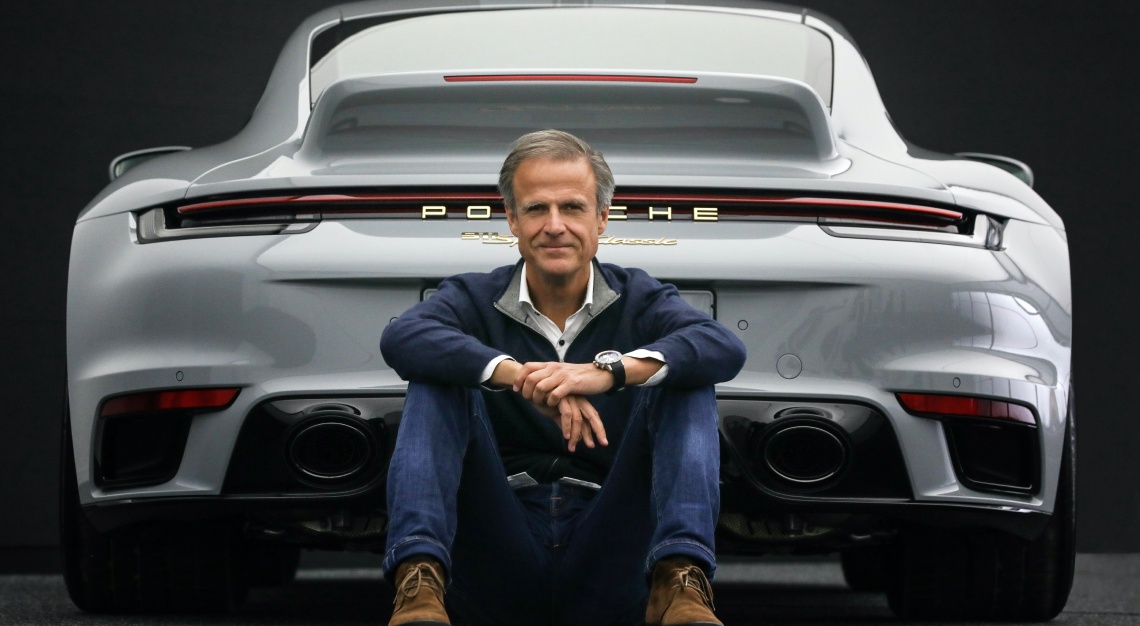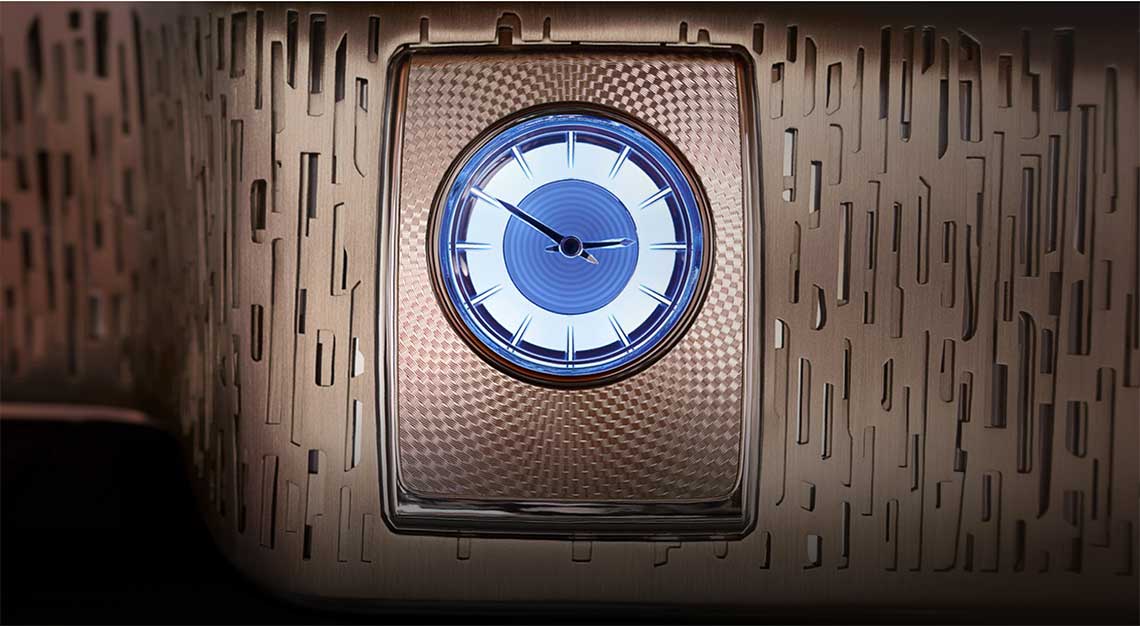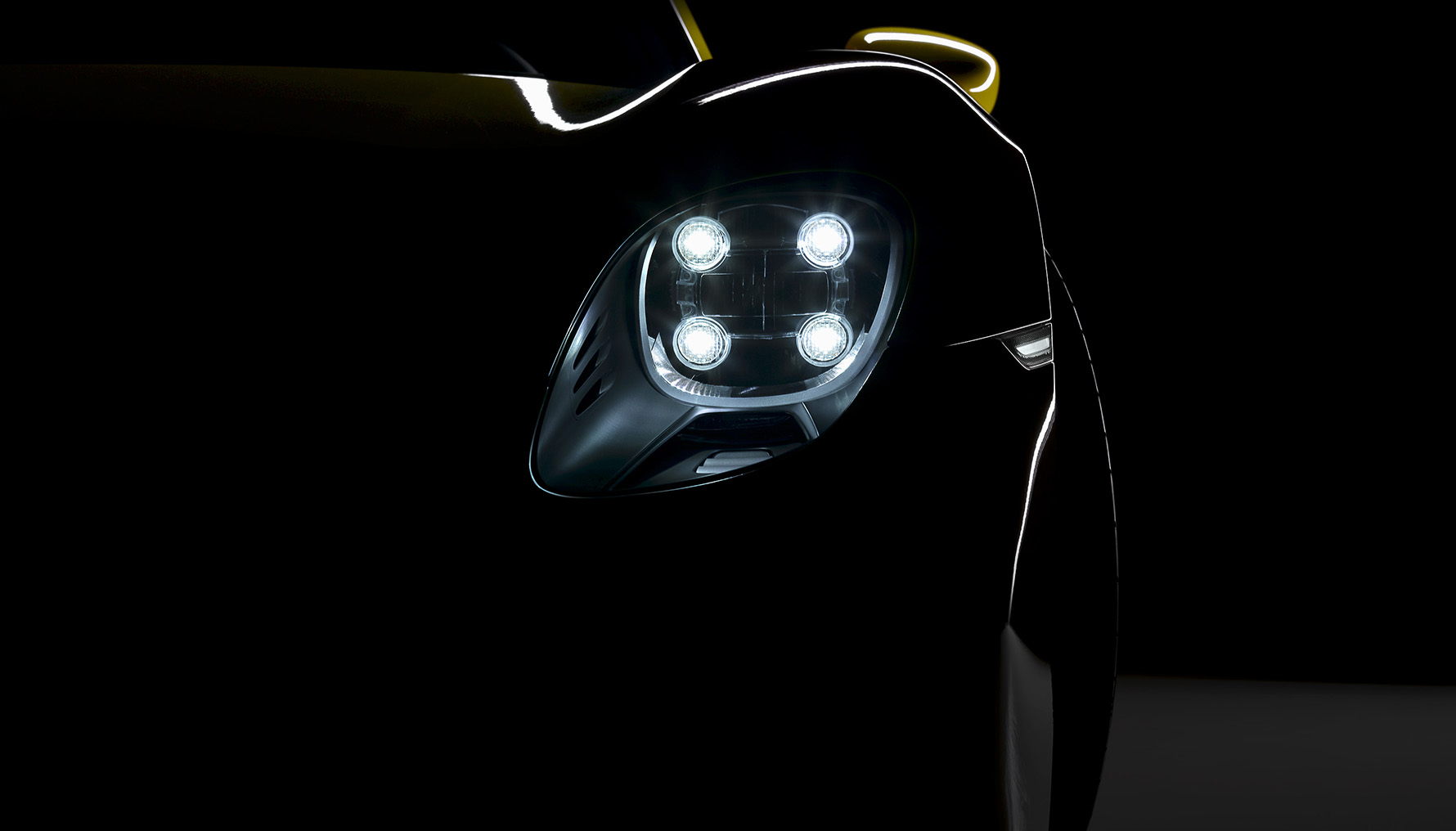We scratch beyond the surface of Porsche’s design ethos with Michael Mauer, long-serving chief designer of the leading German car brand
Having helmed the design department of Porsche for over 20 years, Michael Mauer is more than sensitive to what makes customers fall in love with its cars over and over again.
Mauer has had a hand in the development of all the current Porsche models, and is responsible for the design of every 911 model since he started work at Porsche in 2004. In this insightful chat with Robb Report Singapore, he shares with us some deep thoughts on constantly elevating and evolving the aesthetic allure of Porsche.
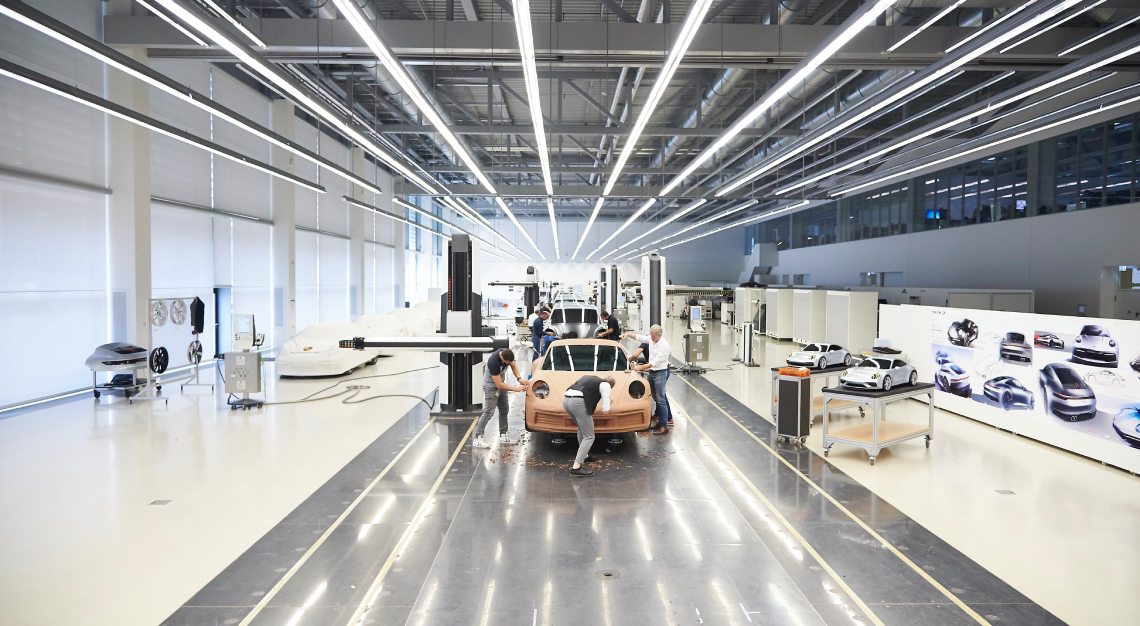
How do you balance tradition with the need for innovation?
This balance is very important to Porsche—and therefore also for us as designers. The rich history and stringent design DNA of the brand are important parts of our brand positioning and identity. As such, we have defined parameters that ensure a Porsche can always be recognised as part of the Porsche family.
Nevertheless, we naturally want and need to continuously develop our design language. This balance is both an opportunity and a challenge. But it also makes our brand unique, and particularly exciting for us as designers.
Which design element is most quintessential to Porsche’s identity?
This is unequivocally not easy to answer: everything starts with the proportions. In general, I believe that an important part of our unmistakable design language is the dramatic width-to-height ratio. This element is a central part of our brand DNA and characterises all of our sports cars. However, I don’t want to reduce our design to this one element.
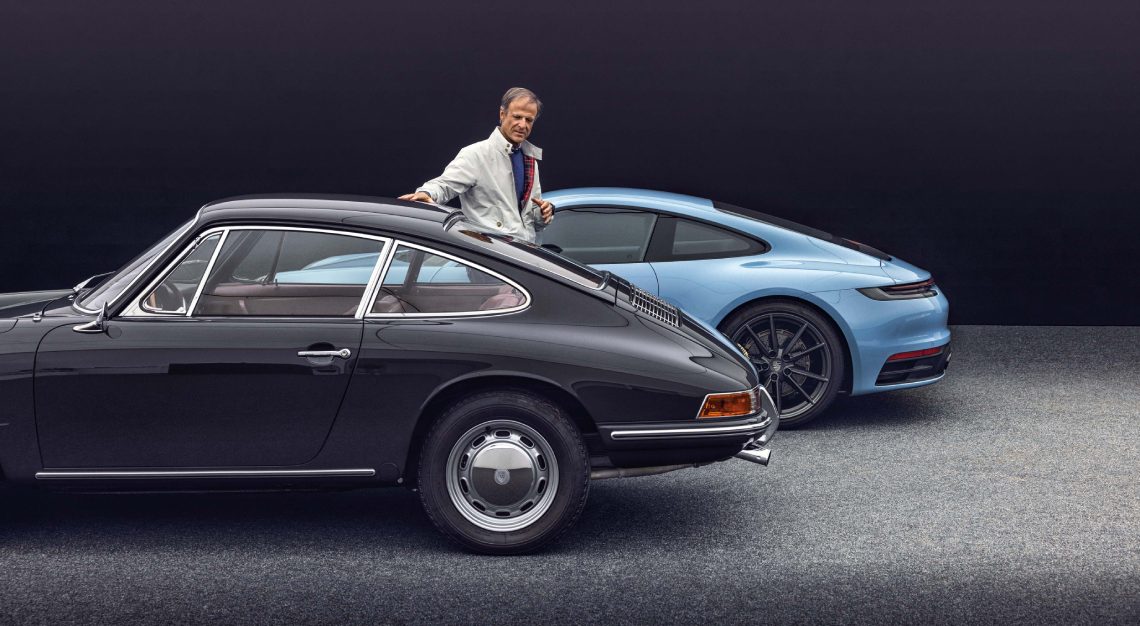
You were instrumental in the introduction of the Cayman, Macan and Taycan models. What is a common starting point for designing each of these models?
Regardless of the model or derivative, the packaging and proportions of a Porsche are always very important. By this we mean the general arrangement of the components in the vehicle. Our design team is involved at a very early stage in the development process. This is so we can ensure that the basis for our typical Porsche design language can be realised here.
How has the integration of new technologies influenced your team’s work?
On the one hand, new technologies open up new possibilities for realising design elements in series production, for example through new materials or manufacturing processes. On the other hand, new drive technologies are changing packaging. A concrete example: by eliminating the massive engine block, we were able to make the typical Porsche bonnet topography of the Taycan more distinctive again.
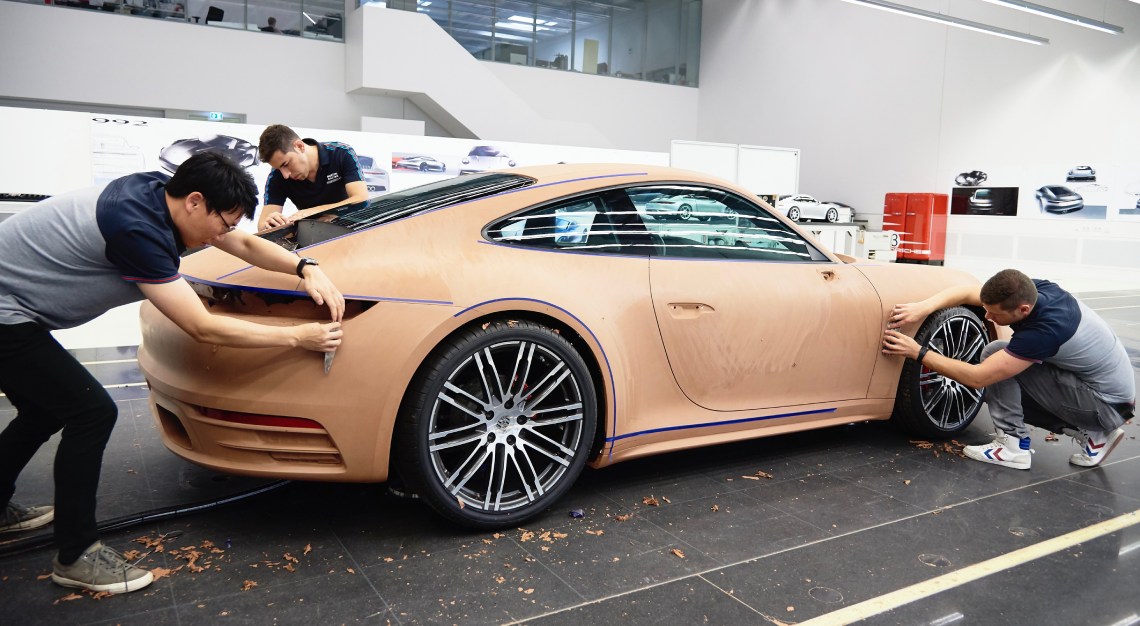
What has been one of the most challenging design obstacles while evolving a model?
One challenge with the Taycan was certainly the integration of the battery. For driveability reasons and a low centre of gravity, the batteries have to be in the floorboard. This drives the height of the car. It takes up a lot of space in the vehicle and would possibly change the width-to-height ratio.
However, as this detail is particularly important to us and, in our view, decisively characterises the perception of the model as part of the Porsche family, we looked for a solution. Our solution is the so-called foot garages, a gap in the battery that gives us space for the feet of the rear passengers and thus enables the typical Porsche flyline.
How is Porsche’s commitment to sustainability influencing materials and design methods?
The topic of sustainability is very important to us. We are constantly on the lookout for new, sustainable materials and manufacturing processes that we can implement in our sports cars. One example is our leather-free interiors, which we now offer in some models, or the use of our very iconic textile patterns like Pepita.
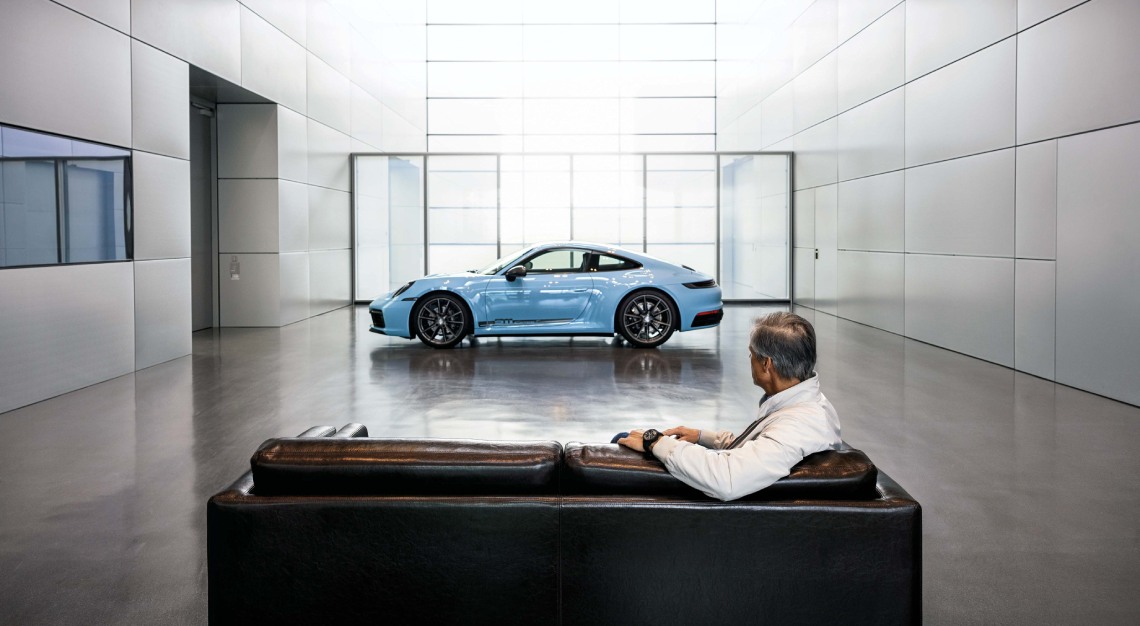
How has your personal aesthetic influenced the Porsche design language?
Of course, a certain degree of personal taste always flows into the design. But I would like to emphasise that a model is never the work of just one designer. Design is teamwork. In every design, there are many ideas from different designers; a complete work of art comes from the exchange of perspectives. Personally, I may have shaped the world of colour with my preference for shades of grey and green.
If you could redesign any historical Porsche model with today’s technology and materials, which would it be?
Probably a 964 – I particularly like this model. And the 550 – known as the “little bastard”.
